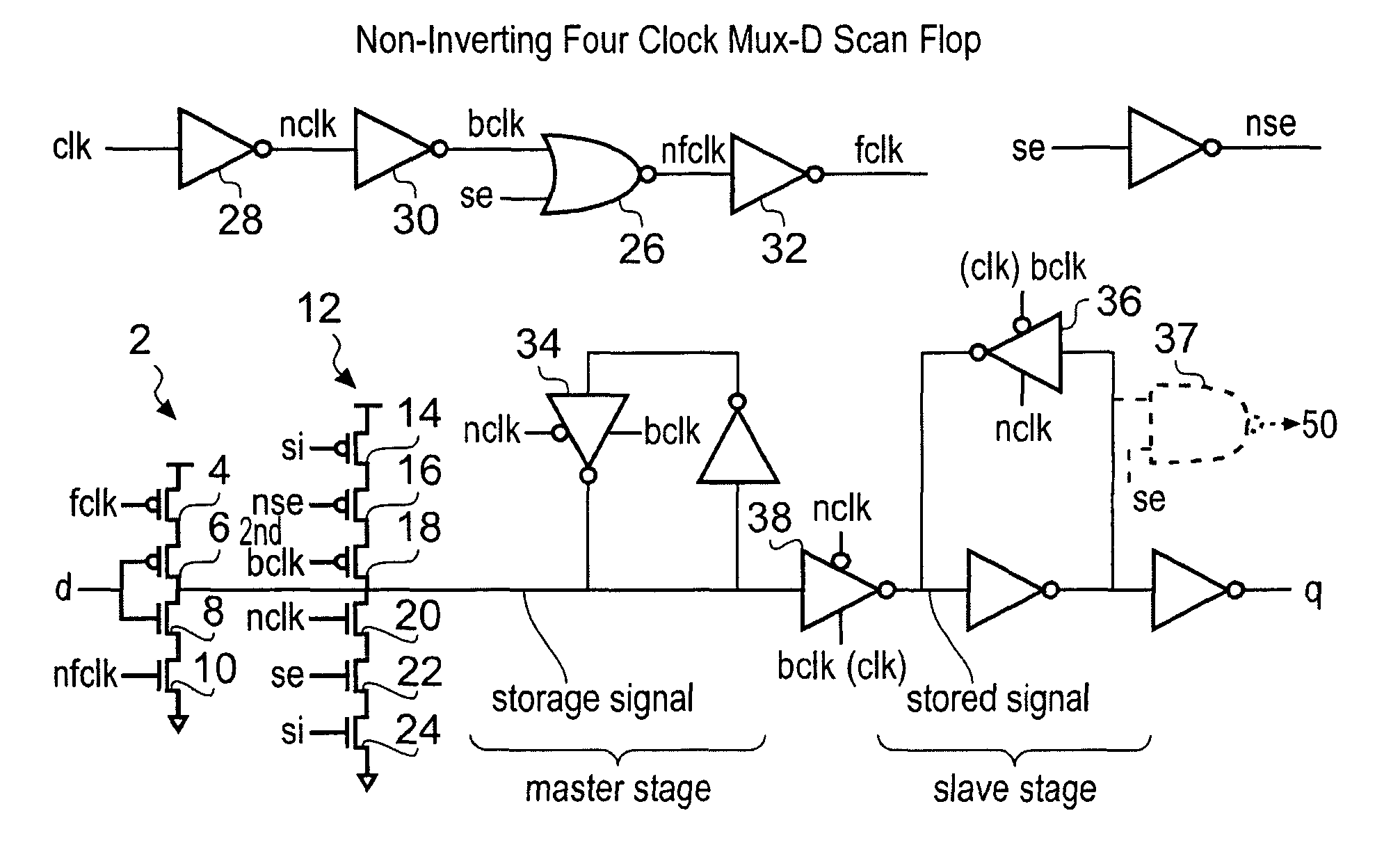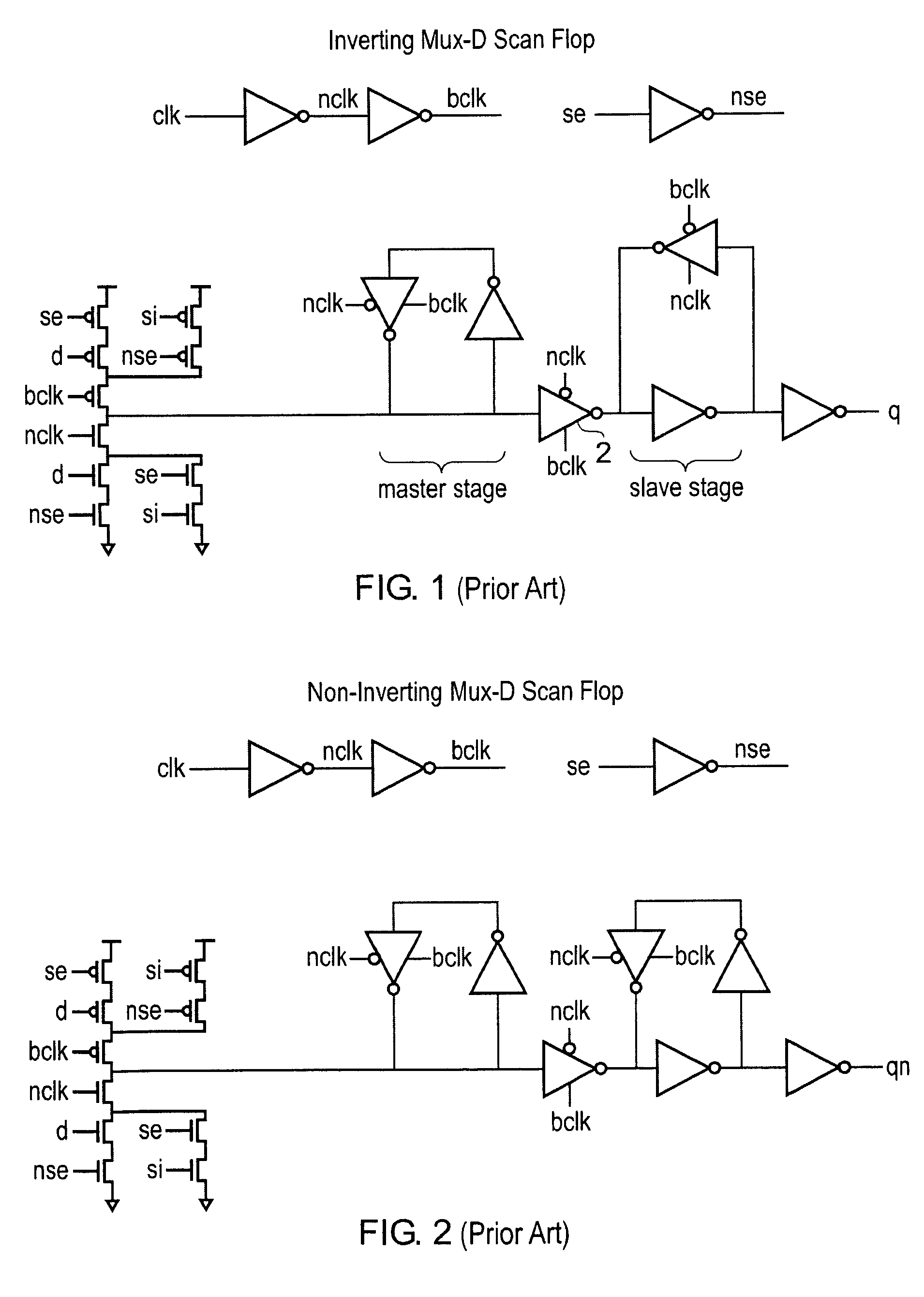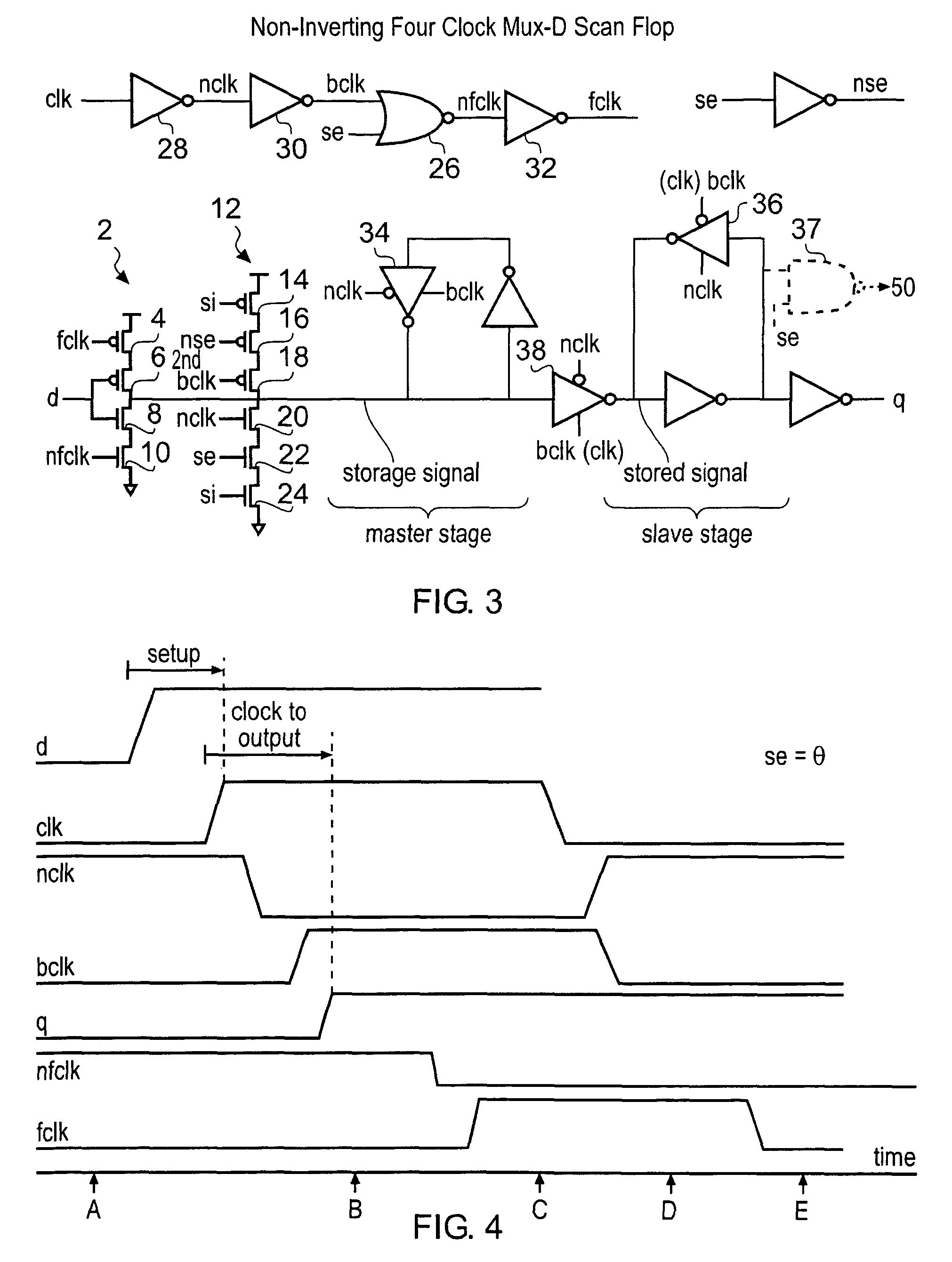Clock control of state storage circuitry
a state storage circuit and clock control technology, applied in the direction of logic circuits, information storage, electronic circuit testing, etc., can solve the problems of slow propagation of data signals into the master stage, increase the clock to output delay, etc., to increase the complexity of clock signal generating circuitry, increase the maximum speed of state storage circuitry, and operate faster
- Summary
- Abstract
- Description
- Claims
- Application Information
AI Technical Summary
Benefits of technology
Problems solved by technology
Method used
Image
Examples
Embodiment Construction
[0037]FIG. 3 shows tristate logic circuitry in the form of tristate inverter circuitry 2 comprising two P-type gates 4, 6 and two N-type gates 8, 10. The output from this tristate inverting circuitry 2 drives the storage signal which is applied to the master stage of the state storage circuitry. Tristate scan signal insertion circuitry 12 comprises three P-type gates 14, 16, 18 and three N-type gates 20, 22, 24. The tristate scan signal insertion circuitry 12 drives the storage signal during scan mode.
[0038]In functional mode the scan enable signal se is not asserted (low) and accordingly gates 22 and 16 are switched off and the tristate scan signal insertion circuitry 12 is tristated and not driving the storage signal. During the scan mode the tristate scan signal insertion circuitry 12 does drive the storage signal and in this case the clock signals to the gates 4 and 10 respectively comprising the fourth clock signal fclk and the third clock signal nfclk are held at fixed values ...
PUM
 Login to View More
Login to View More Abstract
Description
Claims
Application Information
 Login to View More
Login to View More - R&D
- Intellectual Property
- Life Sciences
- Materials
- Tech Scout
- Unparalleled Data Quality
- Higher Quality Content
- 60% Fewer Hallucinations
Browse by: Latest US Patents, China's latest patents, Technical Efficacy Thesaurus, Application Domain, Technology Topic, Popular Technical Reports.
© 2025 PatSnap. All rights reserved.Legal|Privacy policy|Modern Slavery Act Transparency Statement|Sitemap|About US| Contact US: help@patsnap.com



